Occupational Safety Training for Oil Filter Manufacturing
99,000 ₫
Note: The above price is calculated per person and may vary depending on the number of trainees participating in the course and market fluctuations. For more accurate pricing information, please refer to the price list or contact our consultants directly.
Occupational safety is an important issue in oil filter manufacturing factories and needs to be addressed promptly to ensure the health and safety of workers, as well as to enhance the reputation of businesses. The Occupational Safety Training course is an effective solution to raise awareness about accident prevention for workers involved in oil filter production.
Table of Contents
Toggle1. Overview of Oil Filters
a. What is an Oil Filter?
An oil filter, also called an oil cartridge, is an important component in the lubrication system of internal combustion engines. The main function of the oil filter is to remove impurities, sludge, and small metal particles from the engine oil, helping maintain the cleanliness of the lubricant and protecting internal engine parts from wear and damage.
During operation, the engine produces various contaminants such as dust, metal particles, and combustion by-products. If these impurities are not removed timely, they can cause clogging, reduce engine efficiency, and even lead to severe damage. The oil filter ensures that the lubricating oil remains as clean as possible, thereby enhancing engine lifespan and performance.
Oil filters are usually made of special filter paper capable of retaining fine particles while allowing oil to flow through. The oil filter needs to be checked and replaced regularly according to the manufacturer’s recommendations to ensure effective lubrication and maximum engine protection.

b. Machinery Used for Oil Filter Production
- Filter Paper Cutting and Pressing Machine: This machine is used to cut and press filter paper sheets into the required sizes and shapes. The filter paper is made from cellulose fibers or synthetic fibers capable of filtering out small impurities in the oil.
- Filter Paper Rolling and Shaping Machine: After cutting and pressing, the filter paper is fed into the rolling machine to form specific shapes such as cylinders or V-shapes, ensuring the largest surface area to optimize filtration capability.
- Welding and Assembly Machine: This machine welds and assembles the oil filter components together, including the metal casing, filter paper, and other parts like caps and gaskets. This process requires high precision to ensure no oil leakage and effective filtration.
- Quality Control and Testing Machines: To ensure each oil filter meets quality standards, manufacturers use pressure testing machines, durability testers, and other specialized devices to check filtration capacity, mechanical strength, and heat resistance of the product.
- Printing and Labeling Machines: Finally, after the oil filter is completed, printing and labeling machines are used to print necessary product information on the filter, including manufacturer name, product code, and technical details.

c. Famous Oil Filter Brands
- Bosch: Bosch is one of the leading brands in automotive technology and parts, including oil filters. Bosch products are known for their high quality and outstanding durability.
- Mann+Hummel: Mann+Hummel is a well-known German oil filter manufacturer. This brand provides advanced filtration solutions for both cars and industrial applications, notable for effective filtration and long service life.
- Fram: Fram is a very popular American brand, famous for automotive oil filters. Fram offers a diverse product range and is highly rated for quality and performance.
- K&N: K&N is renowned for high-performance filters, especially in racing and demanding applications. Their oil filters are designed to provide optimal filtration and improve engine performance.
- ACDelco: ACDelco is the auto parts brand of General Motors, offering high-quality oil filters for a wide range of vehicles from cars to trucks and industrial machinery.
- Purolator: Purolator is one of the oldest and trusted brands in the U.S., known for reliable and affordable oil filters.
- Donaldson: Donaldson specializes in filtration solutions for many industries including automotive. Their products are known for effective filtration and high durability.
- WIX Filters: WIX Filters is a reputable brand in the filtration industry, providing oil filters for various applications from cars and trucks to heavy industrial equipment.

d. Specific Jobs in an Oil Filter Manufacturing Plant
Group 1
- Executive Director, Deputy Executive Director, Department Heads in the oil filter manufacturing plant.
Group 2
- Safety Officers: manage safety in the plant, design safety procedures, monitor and enforce employees’ compliance with safety work processes.
Group 3
- Operators of cutting and pressing machines for filter paper, ensuring sheets are cut and shaped correctly as required. This work requires machine operation skills and quality control.
- Workers operating rolling machines to shape filter paper into forms such as cylinders or V-shapes. Then, they assemble the paper components into the metal casing, ensuring proper layer arrangement to optimize filtration.
- Workers using welding machines to join parts of the oil filter including casing, cap, and other components. This job demands high precision to ensure no oil leakage and effective filter performance.
- Inspectors checking finished products using specialized testing equipment such as pressure testers, durability machines, and others. They ensure each filter meets quality standards before shipping.
- After completion, workers use printing and labeling machines to print product information on the filter surface, including brand name, product codes, and technical info.
- Workers packaging oil filters into boxes and cartons for transport, ensuring safe packing to prevent damage during shipping.
Group 4
- Office work, service, sales, marketing.
- Production management, quality management, human resource management, material management, finance and accounting management.
- Research and development of new products, packaging design.
2. Overview of Occupational Safety Training for Oil Filter Production
In this article, we focus on issues related to Group 3, because Group 3 are those directly involved in production and bear the highest occupational safety risks. For more information about other groups, see here.
a. What is Occupational Safety Training for Group 3?
- Occupational safety training for Group 3 consists of courses that raise awareness on how to prevent workplace accidents for workers.
- The safety training course helps workers recognize and avoid hazards, reducing the risks of occupational accidents during work.
REGISTER FOR OCCUPATIONAL SAFETY TRAINING SERVICE
b. Training Duration
Initial Safety Training Duration
- Total training time is at least 24 hours, including examination time.
- 8 hours of theory on policies and laws related to occupational safety and hygiene.
- 8 hours of theory on basic knowledge of occupational safety and hygiene.
- 4 hours of theory on specialized training content.
- 2 hours of practical training on specialized content.
- 2 hours of theoretical examination at the end of the training course.
The safety training center will divide the time into multiple sessions depending on the scheduling for workers. Usually, there will be 6 training sessions over 3 days, provided the company arranges continuous training time.
Periodic Safety Training Duration
- Before the occupational safety card expires, workers who want renewal must undergo periodic occupational safety training, with periodic training time at least 50% of the initial training duration.
Explanation: The total periodic occupational safety training time is at least 12 hours, including examination. After completing periodic training and passing the exam, workers will be reissued or have their occupational safety card extended.
c. Training Content
| No. | TRAINING CONTENT | TRAINING DURATION (HOURS) | |||
| Total | Including | ||||
| Theory | Practice | Examination | |||
| I | System of policies and laws on occupational safety and hygiene | 8 | 8 | 0 | 0 |
| 1 | Overview of the legal normative documents system on occupational safety and hygiene. | 6 | 6 | ||
| 2 | System of standards and technical regulations on occupational safety and hygiene. | 1 | 1 | ||
| 3 | Specific regulations of state management agencies on occupational safety and hygiene when constructing, expanding, or renovating facilities for production, use, storage, and inspection of machines, equipment, materials, and substances with strict safety and hygiene requirements. | 1 | 1 | ||
| II | Basic knowledge of occupational safety and hygiene | 8 | 8 | 0 | 0 |
| 1 | Basic knowledge about hazards and harmful factors at the workplace. | 4 | 4 | ||
| 2 | Methods to improve working conditions. | 1 | 1 | ||
| 3 | Safety culture in production and business. | 1 | 1 | ||
| 4 | Rights and obligations of employers and employees; policies and regimes on occupational safety and hygiene for employees; roles and duties of the safety and hygiene network. | 1 | 1 | ||
| 5 | Safety and hygiene regulations, safety signs and instructions, use of safety equipment and personal protective equipment; accident first aid skills, prevention of occupational diseases. | 1 | 1 | ||
| III | Specialized training content | 6 | 4 | 2 | 0 |
| Comprehensive knowledge about machines, equipment, and substances generating hazards and harmful factors; risk analysis, assessment, and management of occupational safety and hygiene; safe working procedures with machines, equipment, and substances with strict safety and hygiene requirements. | 6 | 4 | 2 | ||
| IV | Final safety training examination | 2 | 2 | 0 | 0 |
| Total | 24 | 22 | 2 | ||
See more about training content of 6 groups
d. Occupational Safety Card
After completing the occupational safety training course and passing the examination, workers will be issued an occupational safety card (commonly called the occupational safety certificate for Group 3).
The Group 3 safety card clearly shows information such as: full name, date of birth, job and specific working environment. It also includes training duration, official stamp, and signature confirming course completion.
According to the card issuance regulations specified in Clause 2 of Article 24 of Decree 44/2016/ND-CP, there are two cases:
- If there is a labor contract between the employer and the employee, the employer must sign, stamp, and endorse the safety card for the trained Group 3 employee after completing the safety training course and passing the exam.
- If the worker is freelance or temporary without a labor contract, the training unit must sign, stamp, and endorse the safety card after the worker completes the safety training and passes the exam.

3. Identifying Hazards Affecting Workers in Oil Filter Production
During the oil filter production process, workers may face various hazards. Recognizing and managing these hazards is crucial to ensuring worker safety. Below are some common hazards:
- Chemical exposure: During production, workers may be exposed to chemicals such as solvents, cleaning agents, and lubricating oils. Direct contact or inhalation of these substances can cause health problems like skin irritation, respiratory issues, and other occupational diseases.
- Mechanical and injury risks: Machinery used in oil filter manufacturing, such as cutters, presses, and welding machines, can cause serious injuries if not used properly. Workers may suffer cuts, crushing injuries, or get caught in machinery if safety rules are not followed.
- Fire and explosion hazards: Some chemicals and lubricating oils are flammable, especially in high-temperature environments or near ignition sources. Poor management of flammable substances can lead to fire and explosion risks, causing property damage and endangering workers’ lives.
- Noise exposure: Machinery in the production process often generates high noise levels. Continuous exposure to loud noise can cause hearing problems, stress, and reduced work efficiency.
- Incorrect working postures: Workers may need to work in uncomfortable positions or perform repetitive movements, leading to musculoskeletal issues such as back pain, neck pain, and carpal tunnel syndrome.

4. Safety Measures for Participation in Oil Filter Production
To protect workers, the following safety measures should be implemented:
- Use personal protective equipment (PPE) such as gloves, safety goggles, respirators, and protective clothing.
- Train workers on occupational safety and proper use of machinery.
- Establish safe working procedures and regularly inspect machines and equipment.
- Provide noise reduction measures such as noise-canceling headphones and minimize noise levels within the factory.
- Develop effective fire prevention and firefighting measures and ensure adequate firefighting equipment is available in the factory.
- Periodically conduct work environment monitoring in factories to collect and analyze harmful factors affecting workers, then adjust to reduce hazards to prevent occupational diseases.
Proper identification and management of these hazards help ensure workers’ safety and health while improving factory production efficiency.
5. Benefits of Occupational Safety Training for Oil Filter Production
An Toàn Nam Việt offers your business the following benefits upon completing occupational safety training courses as regulated by Decree 44/2016/ND-CP on Occupational Safety and Hygiene. Companies, factories, and enterprises will:
- Enable workers to recognize potential risks of workplace accidents and take preventive measures to avoid them.
- Allow businesses to establish risk prevention measures in production, operation, and maintenance processes.
- Reduce costs related to safety risks in labor.
- Ensure uninterrupted production, increasing labor productivity and product quality.
- Comply with occupational safety laws, avoiding legal risks.
- Create prestige and professionalism in all aspects, thereby enhancing your company’s brand.
Nam Việt’s training courses provide solutions to prevent external risks affecting individuals, helping them avoid dangers that may cause injuries or worse, fatalities.
REGISTER FOR OCCUPATIONAL SAFETY TRAINING SERVICE
6. Customer Feedback After Completing Oil Filter Production Safety Training
An Toàn Nam Việt has many years of experience accompanying numerous businesses in Vietnam, especially in the southern provinces. This responsibility is very precious to Nam Việt, so the Occupational Safety Training program is increasingly professional. Our growth motivation comes from positive feedback and suggestions from partner companies. Below are some testimonials from our clients:
Hoa Đất Construction and Trading Joint Stock Company
“Nam Việt’s service helped us simplify occupational safety and complete safety documentation for our work process. The consulting team responded promptly and enthusiastically to our questions. Five stars for Nam Việt.”
See more customer interview sessions after using An Toàn Nam Việt’s services
7. An Toàn Nam Việt’s Occupational Safety Training Capability
An Toàn Nam Việt is a reputable and quality occupational safety training center in Vietnam today. Safety training sessions are continuously held at factories, workshops, and construction sites nationwide (all 63 provinces).
REGISTER FOR OCCUPATIONAL SAFETY TRAINING SERVICE
Occupational safety training license
- An Toàn Nam Việt has been inspected and certified by the Department of Safety under the Ministry of Labor – Invalids and Social Affairs to operate occupational safety and hygiene training. This further strengthens our training capacity.

Materials and lectures
- Before being used in occupational safety training courses, training materials are reviewed and approved to ensure accurate and effective content.
- The teaching methods of instructors are standardized according to An Toàn Nam Việt’s standards, developed by experts in occupational safety and hygiene training to maximize learners’ knowledge absorption.
Facilities
- Controlling classroom conditions that affect training helps improve teaching efficiency and learners’ knowledge absorption.
- Our training facilities feature spacious classrooms meeting standards for area, lighting, training equipment, etc.
8. Nationwide Reputable and Quality Safety Training Center
At An Toàn Nam Việt, we prioritize occupational safety training as a core mission. For us, imparting self-protection knowledge to workers equips them with safety tools for their livelihood and contributes to national development.
To ensure effective training, we meticulously prepare everything from teaching tools, equipment, curricula, materials, to audio and lighting.
Our instructors are experts with years of experience, including research on hazard identification and prevention across industries.
Their lectures are practical, vivid, and easy for workers to understand, ensuring comfortable learning and effective knowledge absorption. Content strictly follows Decree 44/2016/ND-CP.
Workers will learn how to prevent hazards and protect themselves, applying this knowledge effectively at work.
Our training center is proud to offer reputable and professional occupational safety training services with these advantages:
- Competitive training costs while ensuring quality.
- Flexible training schedules tailored to company production.
- Fast and compliant certification procedures.
- Experienced instructors with long-term expertise.
- Classrooms controlled for optimal learning environment.
- Lectures tailored to enterprise occupational safety work.
- An Toàn Nam Việt works dedicatedly and professionally to support clients accurately and promptly.

9. Additional References for Occupational Safety Training Materials for Oil Filter Production
- Occupational Safety Materials for Oil Filter Production
- Complete Occupational Safety Training Materials
- Occupational Safety Training Test Materials
- Occupational Safety Training Curriculum for Oil Filter Production
- Occupational Safety Multiple-Choice Test for Oil Filter Production
No comments yet

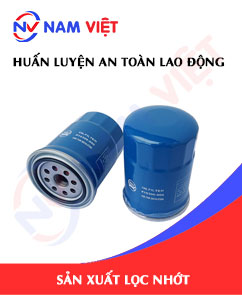
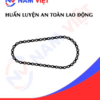
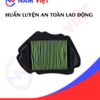



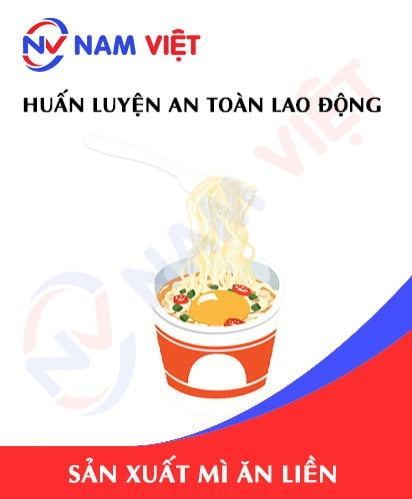
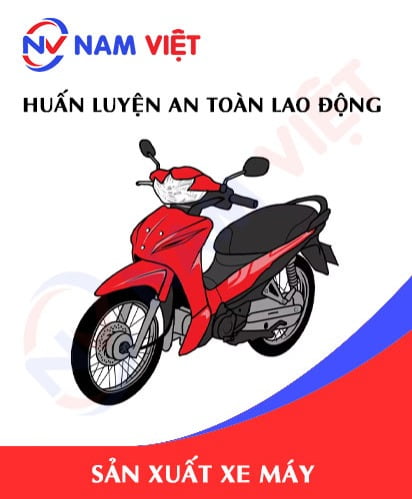
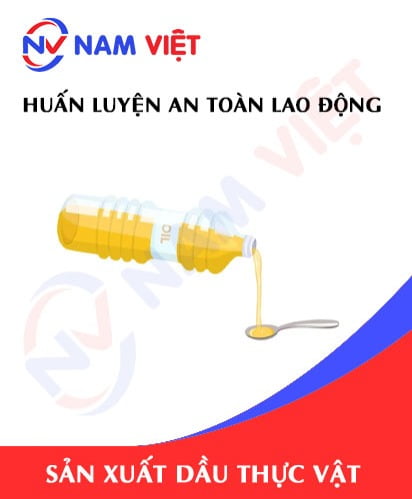
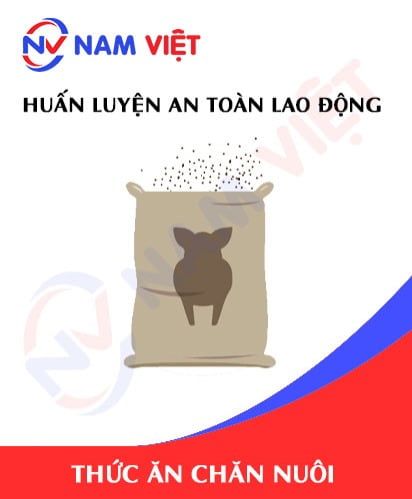
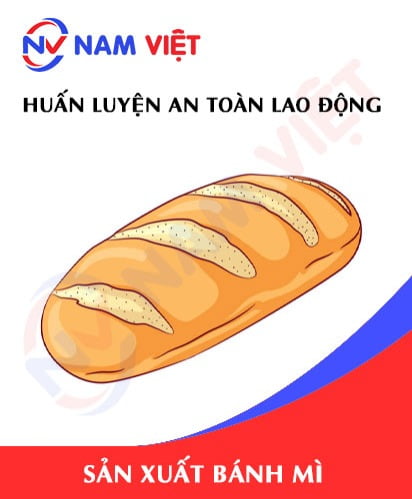
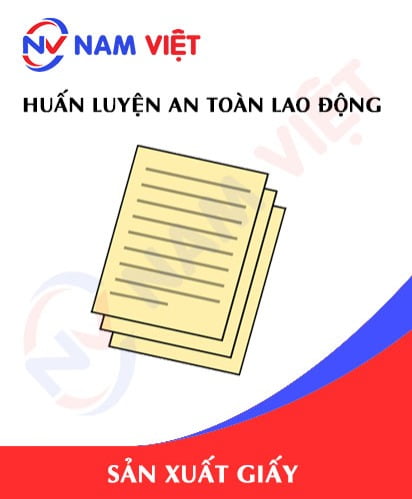
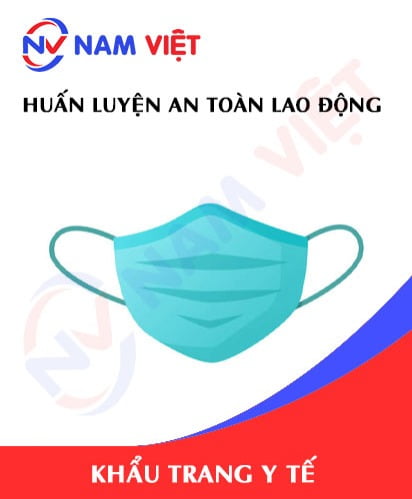
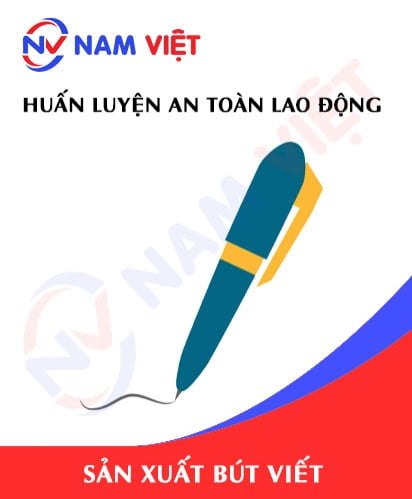
Review Occupational Safety Training for Oil Filter Manufacturing
There are no reviews yet.